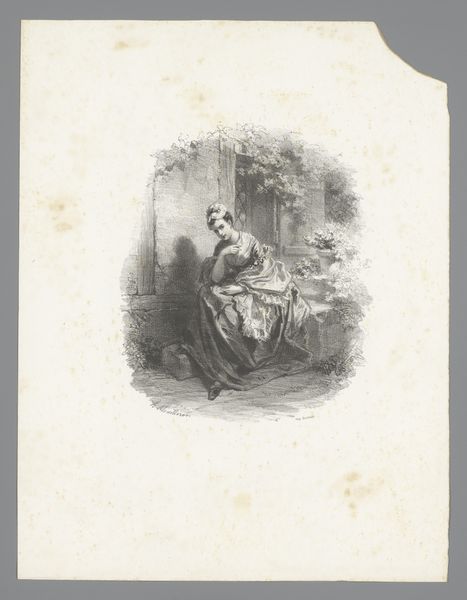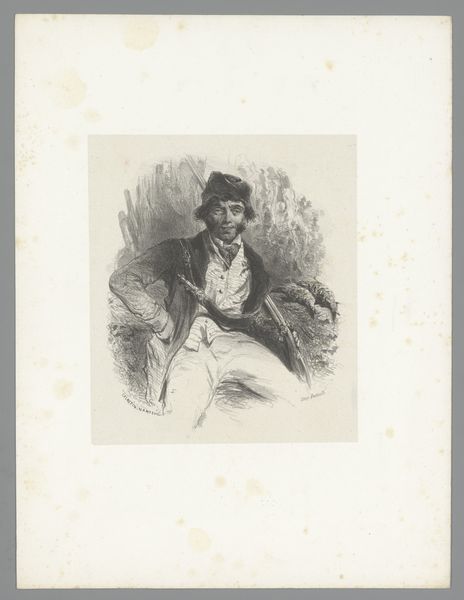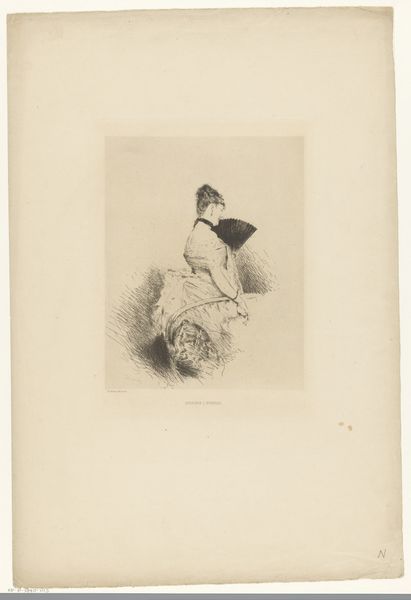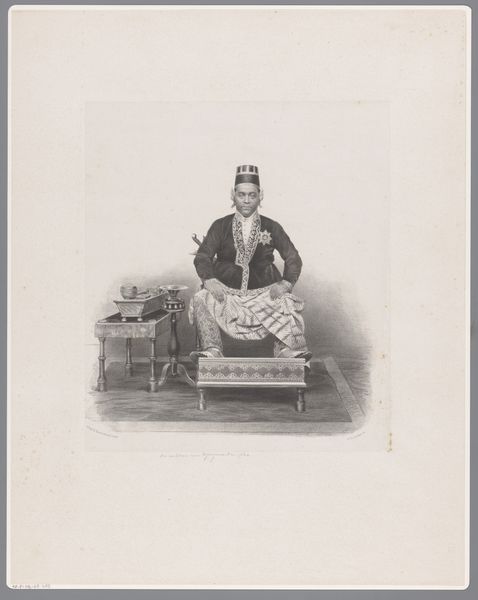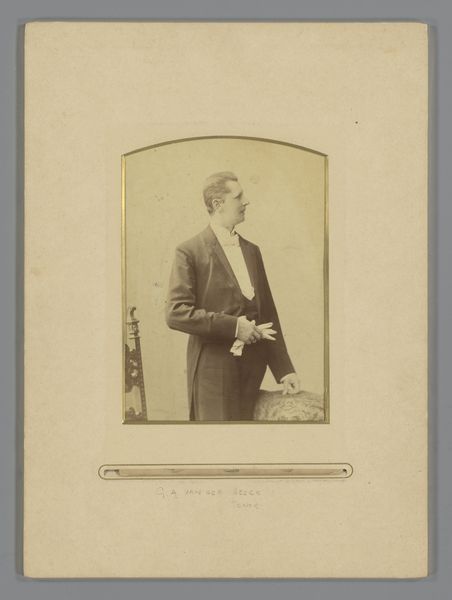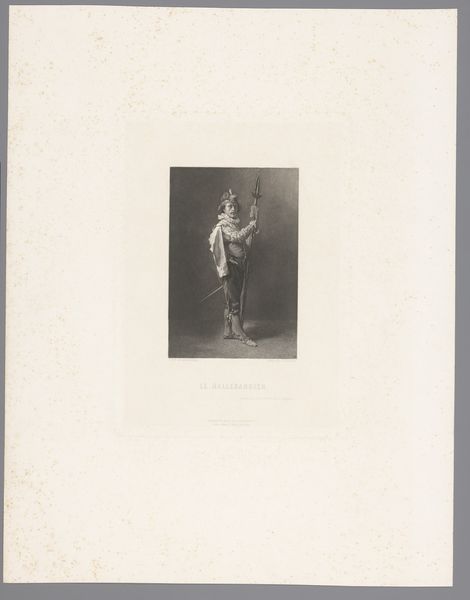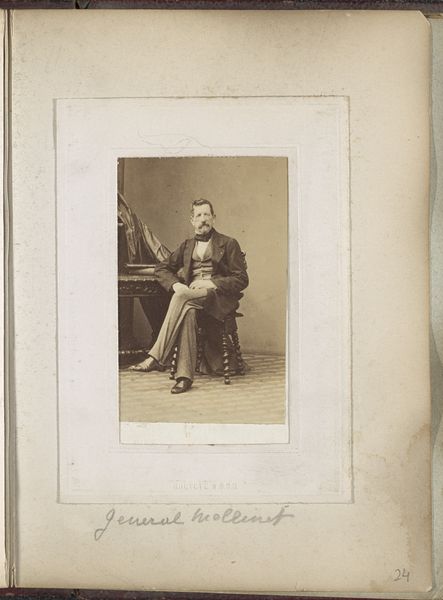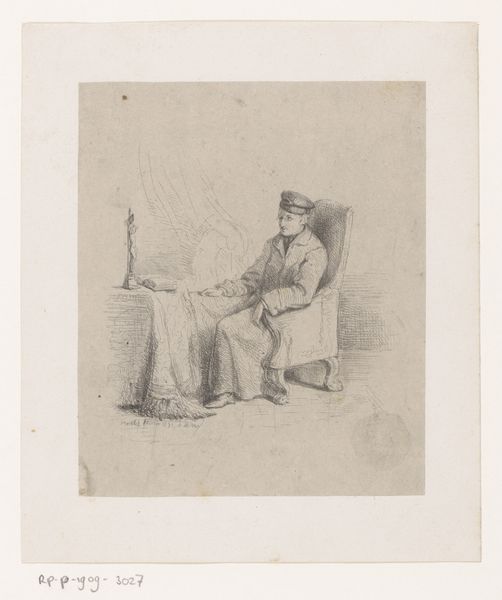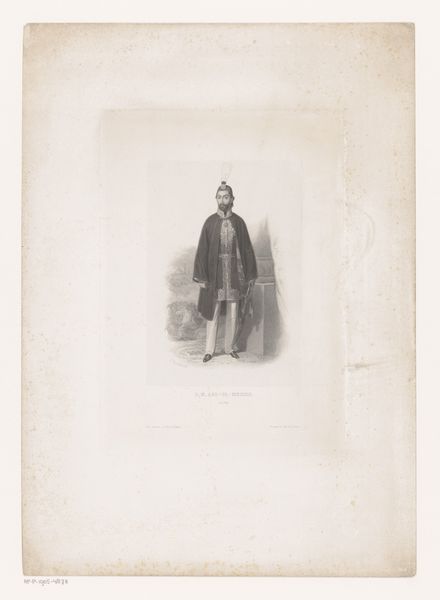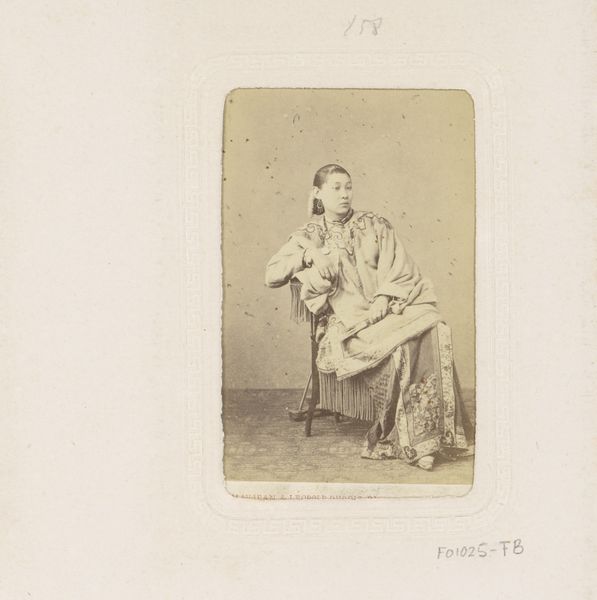
photography
#
portrait
#
photography
#
orientalism
#
genre-painting
Dimensions: height 555 mm, width 440 mm
Copyright: Rijks Museum: Open Domain
Curator: Hoffmeister's photographic portrait, dating circa 1851 to 1883, is striking; the figure's relaxed yet poised demeanor sets a peculiar mood. Editor: It's the raw quality of the photographic process here, isn't it? I mean, seeing him barefoot in formal attire suggests a merging of worlds through the materials present. What kind of social narratives are at play? Curator: Note how his posture conforms to traditional portrait conventions of the time, albeit interpreted through the then-nascent lens of Orientalism. We see an interplay of shadow and light creating tonal variety across textures, fabrics and, remarkably, skin. The photograph becomes a semiotic text of exoticism. Editor: Right, it’s impossible to separate the making of this image from colonial enterprises. The soft gradations possible through photography present a certain ‘truth’, an authenticity, though surely it's constructed. Consider how photography served political functions for surveillance and control during this period. How are indigenous subjects turned into consumable materials? Curator: Certainly the composition subtly asserts a power dynamic, one might interpret the use of a chair as a visual element that is both throne-like, and distinctly "Western," a form imposed onto the sitter. How does the application of this photographic technique influence, change, the very visual lexicon we use to engage with portrayals of status? Editor: His clothing seems rich, well-constructed. Perhaps that wealth should be critically examined within larger histories of extraction. We must contextualize materials! Labor! Beyond just "portrait," think of who benefited from this depiction. Was Hoffmeister paid well? What would have Ngabehie gotten out of this photo? Curator: The meticulous rendering and formal structuring of the scene draw attention to these precise aesthetic considerations: How it communicates status; through gesture, decorum, and arrangement. Let's not understate how light operates symbolically in articulating the form of status itself. Editor: So, analyzing the formal properties, how each compositional element underscores a type of Orientalist representation becomes essential, sure. But tracing the actual labor required helps peel back layers of complexity, I think, helping decolonize viewing habits. Curator: An exquisite example of a constructed colonial gaze, formally codified. Editor: Seeing this photograph this way invites a whole network of material and labor-related questions, ultimately destabilizing it, if that makes sense?
Comments
No comments
Be the first to comment and join the conversation on the ultimate creative platform.

